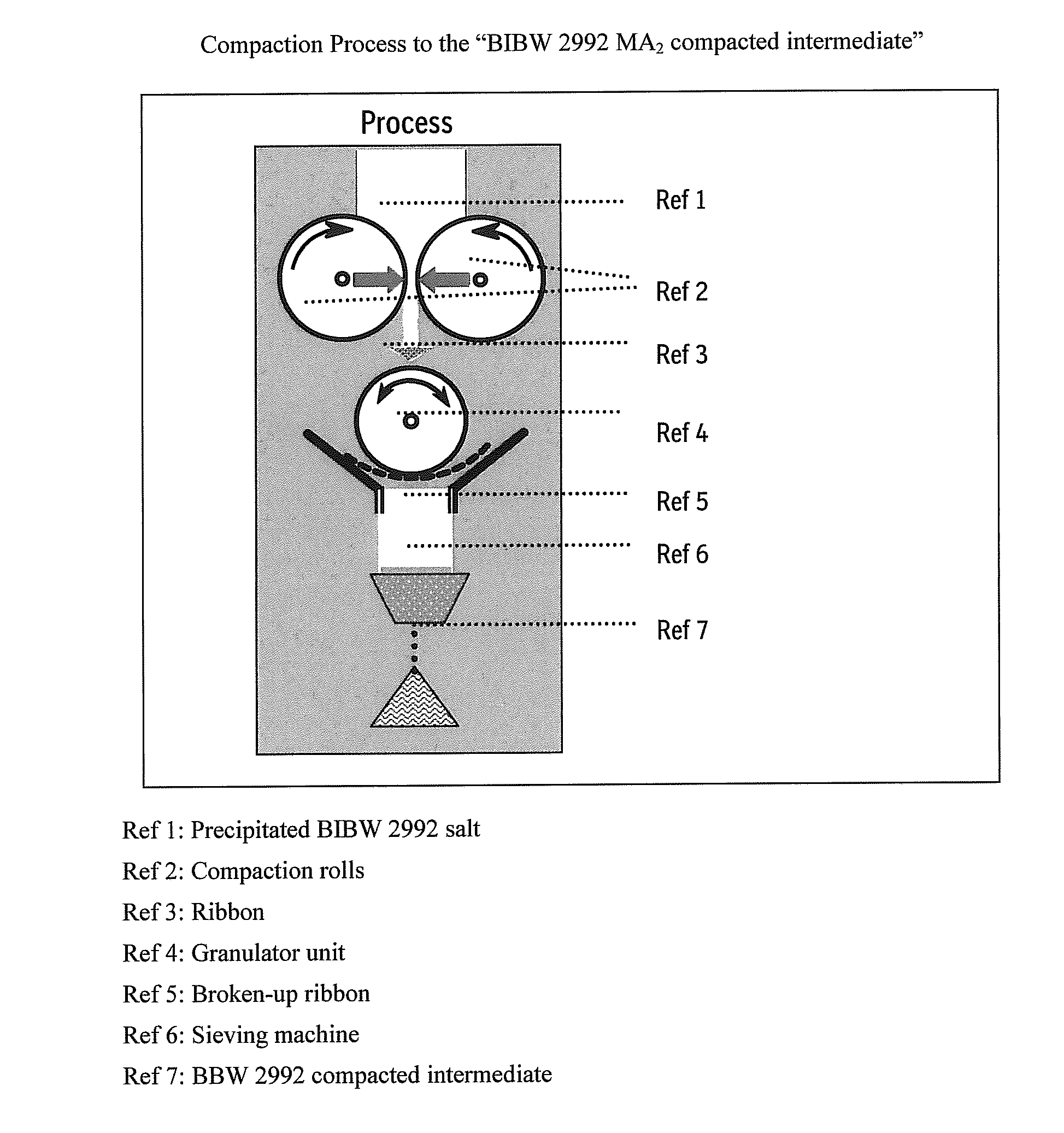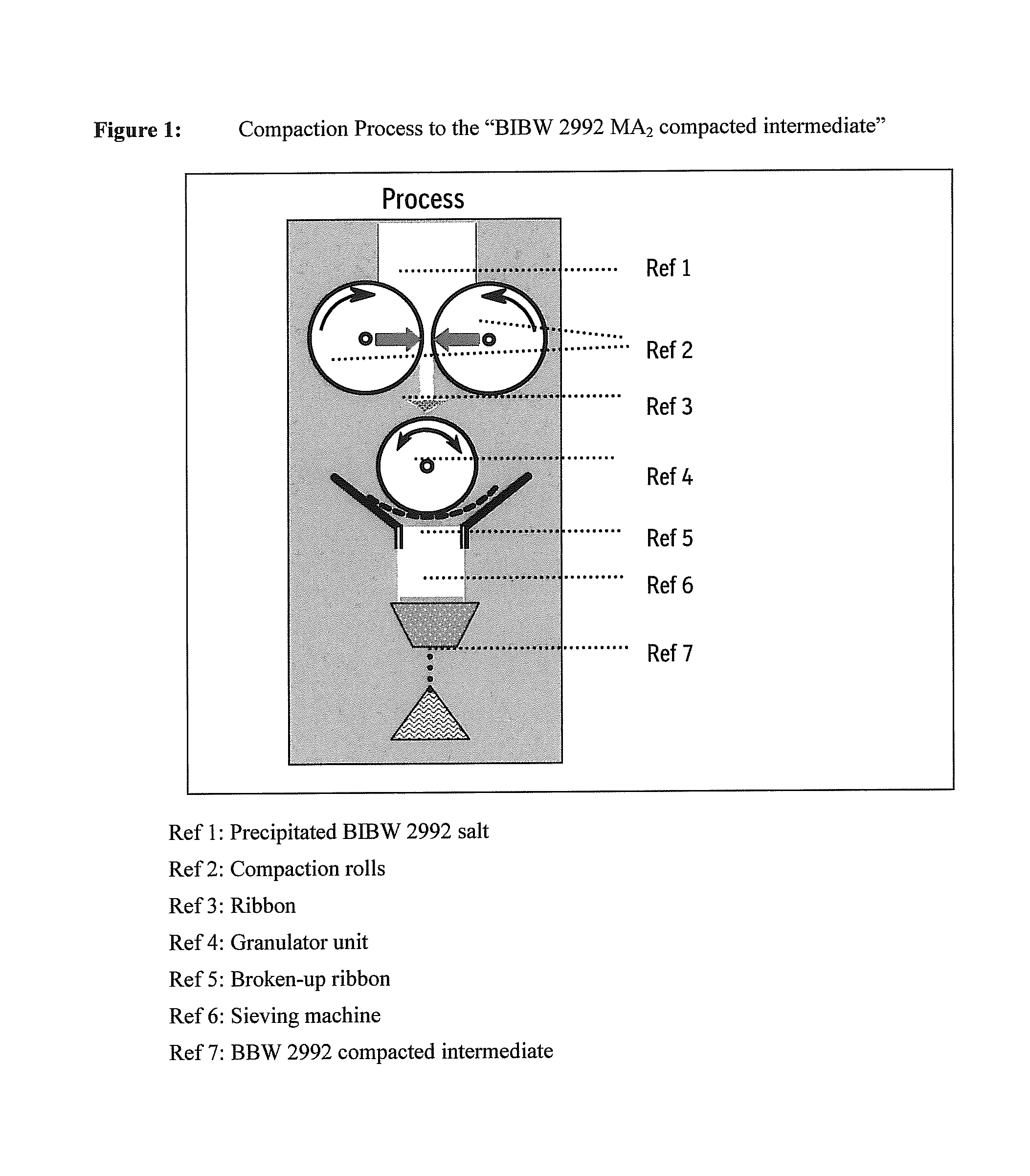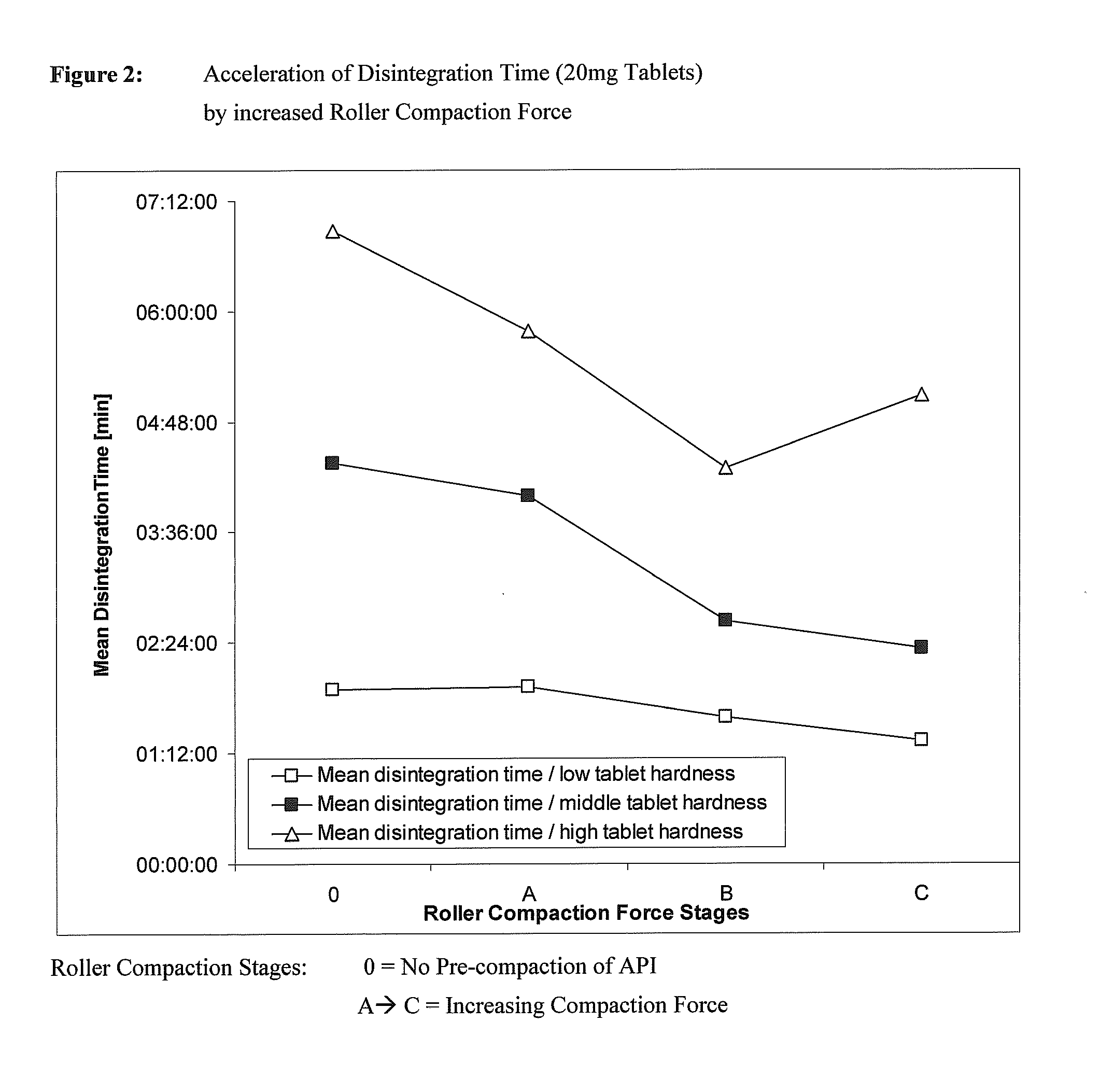Materials inadequate in these aspects might block the
grinding chamber during the process uneconomically interrupting it which makes cleaning operations necessary.
A chief
disadvantage is the number of separate steps involved, as well as the time and labor necessary to carry out the procedure.
Further, the use of aqueous solvents is limited by the stability of the product to be granulated.
Explosion concerns and environmental regulations may limit the use of certain organic solvents.
Especially when the API is susceptible for
moisture and stability of the final product may be affected by wet-
granulation techniques.
But it also bears challenges, as
compressibility of the obtained granules decreases for a second compaction step to tablets.
If
porosity is too low, no water can be channelled into the tablet core supporting disintegration.
Dry
granulation by “slugging” may be slow, inefficient, and many times requires several attempts at a successful formulation to ensure
material flow.
Therefore the process is difficult to control.
BIBW 2992 MA2 as described in WO 2005 / 037824 shows the following challenging physico-chemical properties relevant for processability in the preparation of a
solid oral
dosage form:susceptibility against
moisture affecting the
chemical stability of the API and leading to decrease of the
active principle and increase of
contamination with
hydrolytic degradation products;
needle shape of the precipitated
active ingredient, causinga high variation of its low poured density due to random arrangement and length of the needles,poor flow properties due to increased resistance of the needles to align in flow direction,capping or laminating of tablets during a direct compression process due to
entrapment of too much air inside the final blend,low
compressibility, also in combination with additional excipients such as binders or fillers leading to mechanically weak granules in a dry-granulation process with subsequent segregation tendencies of the API during
tableting due to crumbeling of these granules, andadhesive properties of the API on surfaces due to increased electrostatic charging leading to a
selective reduction of BIBW 2992 MA2 in a
powder mixture during
processing and therefore lack of API in the produced tablets, which would show in a inadequate
assay value.
The variation of more than 100% is unacceptable for a robust manufacturing process.
BIBW 2992 MA2 powder as obtained has poor flowability when used in a direct
tableting process.
This requires a substantial reduction of the standard
tableting speed and causes high variation of compaction force and tablet
mass due to incomplete filling of the dies.
Since the powder is very voluminous the target tablet mass and acceptable tablet
hardness can not be achieved.
Furthermore, high compaction forces applied in the tableting process leads to capping whereas low compaction forces lead to sticking of the tablets.
Experiments with precipitated API using dry granulation
processing yielded a product varying in poured density with poor
physical stability of the granules.
In total the uniformity of the API content uniformity in the batch was inadequate.
Furthermore, disintegration and
hardness of the tablets obtained from the dry-granulated API was dissatisfactory due to the twofold compaction of the mixture.
Whereas experiments with milled API applying dry granulation yielded stable granules with excellent content unity and a product not containing needle-shaped crystals in the final blend, disintegration of the tablets obtained was unsatisfactorily prolonged due to increased surface area of the soluble API.
Further drawbacks were a high amount of fines in the granules leading to variation of the compression force.
Hot melt granulation with precipitated API also yielded stable granules with excellent content uniformity and a product not containing needle-shaped crystals in the final blend, nevertheless, drawbacks of this approach were variation of the compression force needed to tablet the granules, a variation of poured density of the product and a tendency to form wall-adhesions inside the granulation bowl of the mixer.
The results summarized hereinbefore show that, practically, it is not possible to ensure a robust process and constant
drug product quality for the varying physico-chemical characteristics of BIBW 2992 MA2, simply applying
standard state-of-the-art techniques by routine.
 Login to View More
Login to View More 


